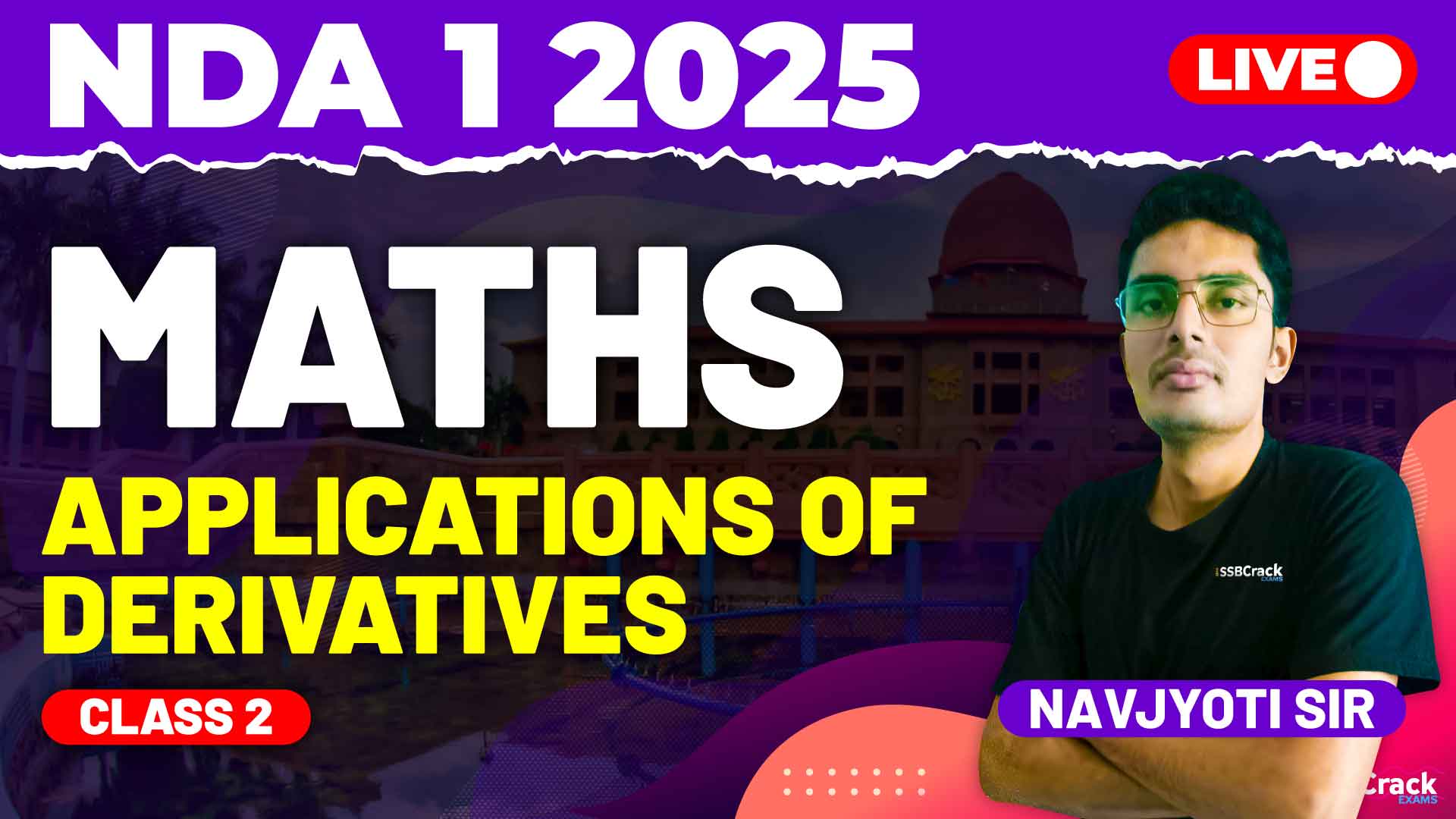A recent class on Applications of Derivatives was held as part of the preparation for the National Defence Academy and Naval Academy (NDA-NA) Exam – Paper I (Maths). The focus of the session was to explore critical sub-topics like Increasing and Decreasing Functions, Local and Absolute Maxima and Minima, and the use of the First and Second Derivative Tests to calculate these values. These concepts not only enhance mathematical understanding but also find extensive use in solving practical problems related to optimization and function analysis.
Key Highlights of the Class
1. Increasing and Decreasing Functions
The class began with an introduction to identifying whether a function is increasing or decreasing over a given interval. The instructor explained how the behavior of a function’s derivative provides insight into its monotonicity:
- Increasing Functions: A function where values rise consistently as the input increases.
- Decreasing Functions: A function where values fall consistently as the input increases.
Students practiced identifying these trends using simple examples and interpreting the behavior of functions graphically to reinforce their understanding.
2. Maxima and Minima
The concept of Local Maxima and Minima was thoroughly discussed. Local maxima refer to points where the function reaches a peak within a small interval, while local minima denote points where it hits the lowest value. The discussion extended to Absolute Maxima and Minima, which represent the highest or lowest values of a function over its entire domain.
The session emphasized how these points are crucial for solving real-life optimization problems, such as finding the shortest path, minimizing costs, or maximizing profits.
3. First and Second Derivative Tests
To determine maxima and minima, students were introduced to two essential methods:
- First Derivative Test: A method to identify critical points by analyzing changes in the sign of the derivative.
- Second Derivative Test: A tool to confirm whether a critical point is a maximum, minimum, or point of inflection by examining the sign of the second derivative.
The instructor highlighted the importance of these tests in simplifying calculations and solving complex problems efficiently.
4. Interactive Problem-Solving
The class involved solving several examples, including theoretical and real-world problems. Students worked on identifying critical points, determining whether they represent maxima or minima, and interpreting their significance in various contexts. The exercises ensured that the theoretical concepts were well integrated with practical applications.
Strategies to Prepare for Applications of Derivatives
1. Build a Strong Foundation
Before diving into applications, ensure a solid grasp of basic differentiation rules and techniques. Practice finding derivatives of standard functions and revisit topics like product and chain rules.
2. Visualize with Graphs
Graphical representation is a powerful tool to understand the behavior of functions. Sketch graphs to analyze increasing and decreasing intervals and identify maxima and minima visually.
3. Master the Tests
Focus on thoroughly understanding the first and second derivative tests. Practice applying these techniques to a variety of functions, from simple polynomials to more complex ones involving trigonometric or exponential terms.
4. Solve Practical Problems
Work on optimization problems that require identifying maxima and minima in real-world scenarios. These include questions about profit maximization, area minimization, and motion analysis.
5. Focus on NDA-NA Patterns
Study past NDA-NA question papers to understand how applications of derivatives are tested. Look for common problem types and practice solving them under timed conditions.
6. Use Step-by-Step Approaches
Break down complex problems into smaller steps. Start by finding the derivative, locate critical points, and use the appropriate test to identify maxima or minima. This systematic approach reduces errors.
7. Revise Regularly
Revisit these topics frequently to ensure retention. Practice a mix of problems daily to maintain proficiency and build confidence.
Conclusion
The recent class on Applications of Derivatives offered a comprehensive exploration of sub-topics like Increasing and Decreasing Functions, Maxima and Minima, and the use of First and Second Derivative Tests. By combining conceptual clarity with practical problem-solving, the session provided students with the tools to approach these topics confidently in the NDA-NA exam.
Preparing for applications of derivatives requires consistent effort, a clear understanding of concepts, and regular practice. By following the strategies discussed, aspirants can strengthen their grasp on this crucial topic and enhance their overall performance in the exam.
Stay diligent, keep practicing, and success will follow!



















